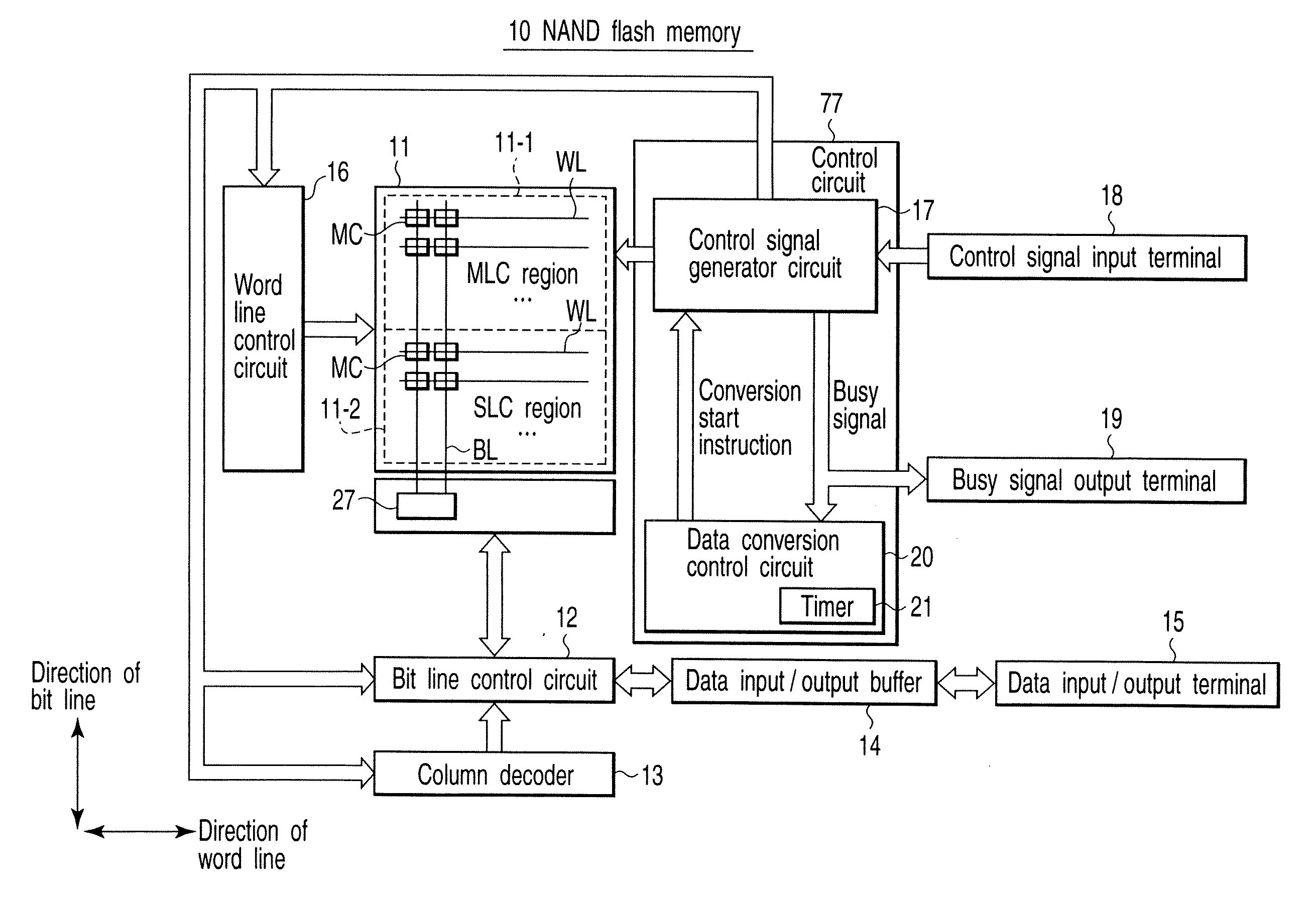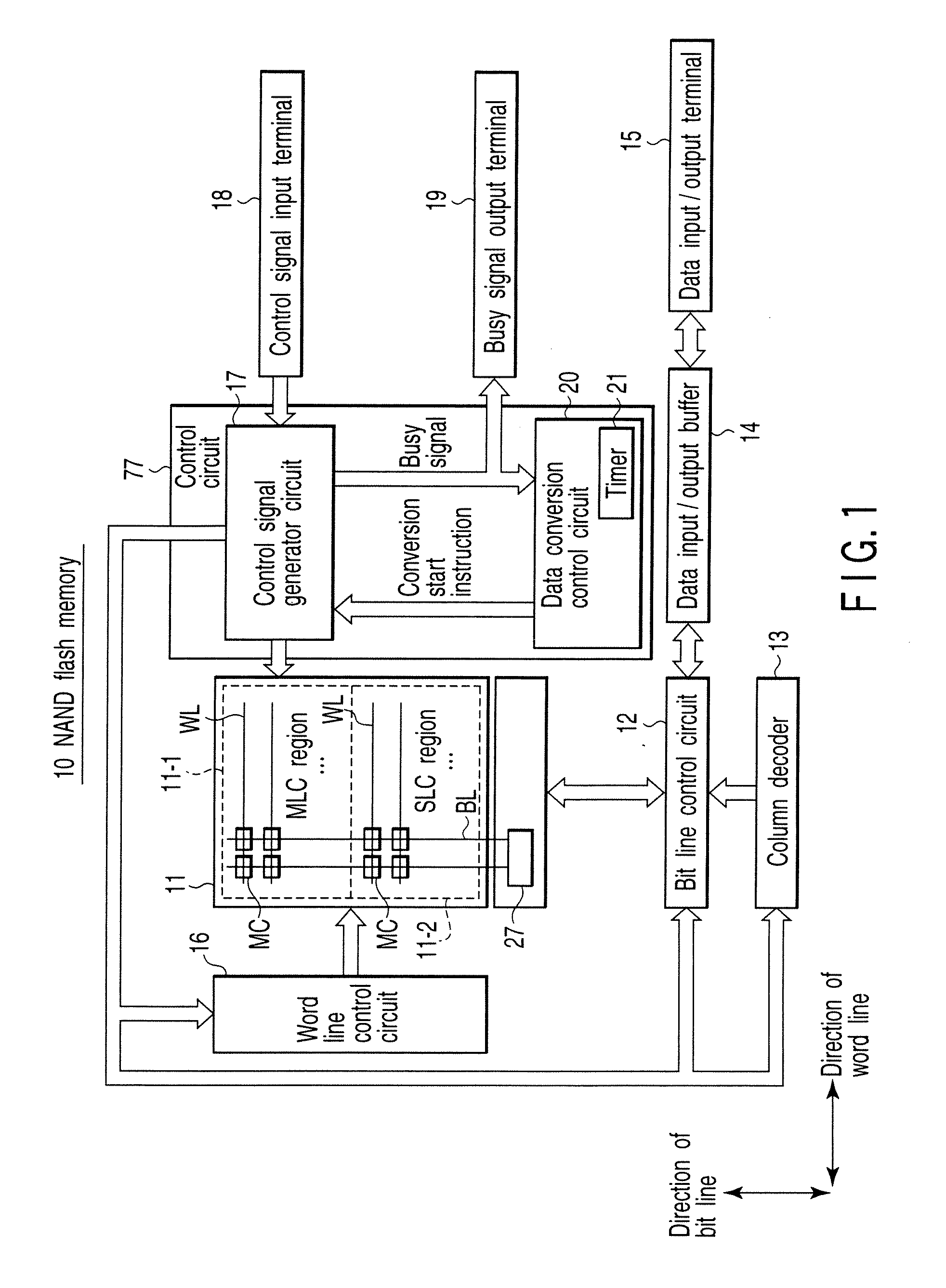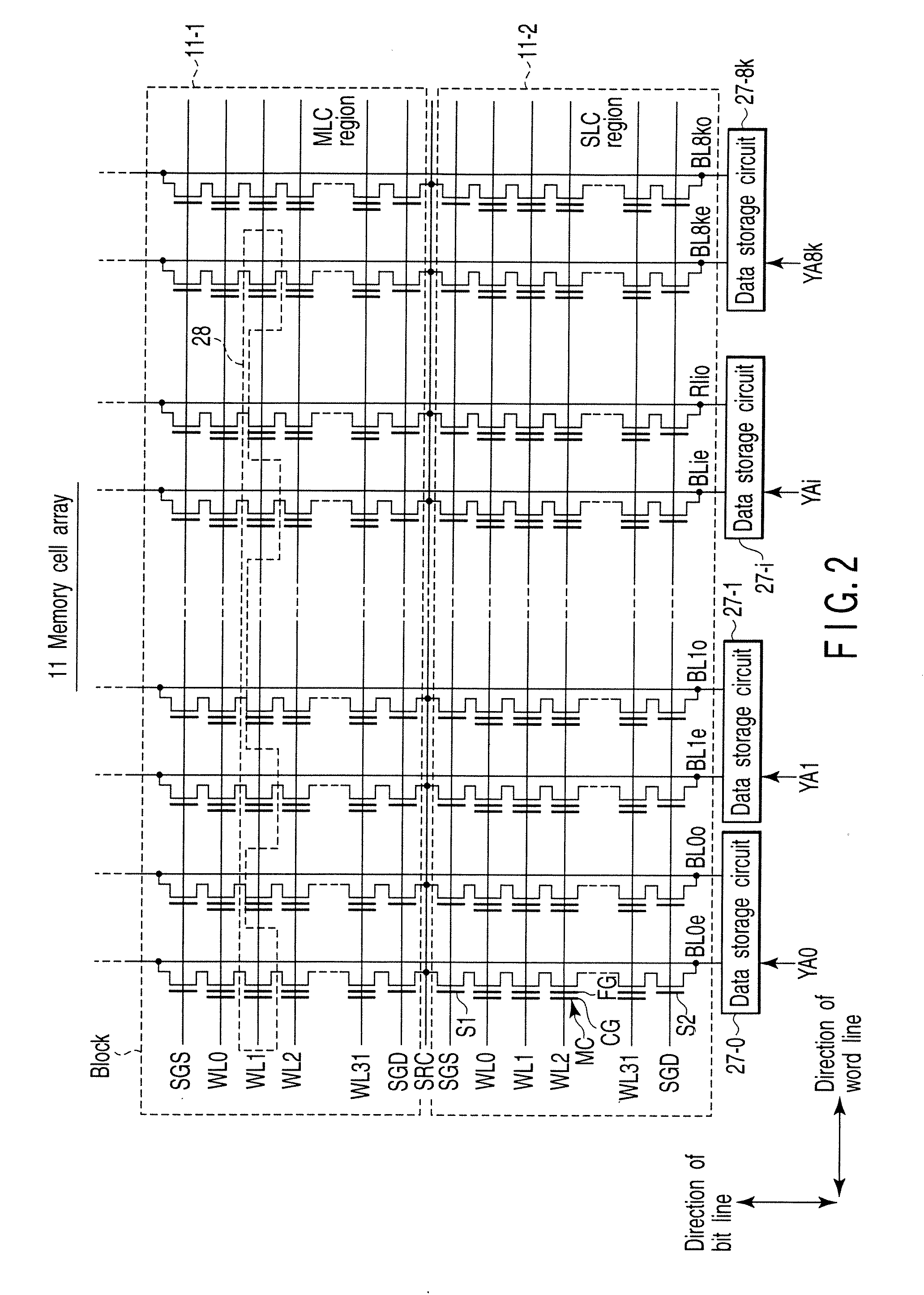Semiconductor memory device
a memory device and semiconductor technology, applied in static storage, digital storage, instruments, etc., can solve the problems of reducing the write speed and therefore increasing the write time, affecting the write speed, so as to achieve the effect of decentralizing the write operation
- Summary
- Abstract
- Description
- Claims
- Application Information
AI Technical Summary
Benefits of technology
Problems solved by technology
Method used
Image
Examples
first embodiment
[0034]Using FIGS. 1 to 14, a semiconductor memory device according to a first embodiment of the invention will be explained. FIG. 1 is a block diagram of a semiconductor memory device according to the first embodiment. In the embodiment, a NAND flash memory is taken as an example.
[0035]As shown in FIG. 1, the NAND flash memory 10 comprises a memory cell array 11, a data storage circuit 27, a bit line control circuit 12, a column decoder 13, a data input / output buffer 14, a data input / output terminal 15, a word line control circuit 16, a control signal input terminal 18, a busy signal output terminal 19, and a control circuit 77 which has a control signal generator circuit 17 and a data conversion control circuit 20.
[0036]The memory cell array 11 includes an MLC (Multi Level Cell) region 11-1 which has as memory cells MC multilevel NAND flash memories capable of recording a plurality of bits of data into a single memory and an SLC (Single Level Cell) region 11-2 which has as memory c...
second embodiment (
Example of Providing a Controller)
[0140]Next, using FIG. 18, a semiconductor memory device according to a second embodiment of the invention will be explained. FIG. 18 is a block diagram of a semiconductor memory device according to the second embodiment. The second embodiment relates to an example of further providing a controller 50. In the description below, a detailed explanation of the parts overlapping with those in the first embodiment will be omitted.
[0141]As shown in FIG. 18, the semiconductor memory device according to the second embodiment differs from the first embodiment in the following points.
[0142]The semiconductor memory device of the second embodiment further includes a controller 50. Moreover, the second embodiment differs from the first embodiment in that the NAND flash memory 10 does not have the data conversion control circuit 20.
[0143]The controller 50 is configured to manage the physical state of the inside of the NAND flash memory 10 (for example, in what bl...
third embodiment (
Example of Providing an SLC Region / MLC Region Defining Circuit)
[0150]Next, using FIG. 19, a semiconductor memory device according to a third embodiment of the invention will be explained. FIG. 19 is a block diagram of a semiconductor memory device according to the third embodiment. The third embodiment relates to an example of further providing an SLC region / MLC region defining circuit. In the description below, a detailed explanation of the parts overlapping with those in the first embodiment will be omitted.
[0151]As shown in FIG. 19, the semiconductor memory device differs from that of the first embodiment in that the control signal generator circuit 17 includes an SLC region / MLC region defining circuit 79.
[0152]The SLC region / MLC region defining circuit 79 is configured to define either the SLC region 11-2 or MLC region 11-1 in each block, a region in the memory cell array 11.
[0153]Therefore, for example, when an instruction to the effect that “Do writing in the SLC region 11-2” ...
PUM
 Login to View More
Login to View More Abstract
Description
Claims
Application Information
 Login to View More
Login to View More - R&D Engineer
- R&D Manager
- IP Professional
- Industry Leading Data Capabilities
- Powerful AI technology
- Patent DNA Extraction
Browse by: Latest US Patents, China's latest patents, Technical Efficacy Thesaurus, Application Domain, Technology Topic, Popular Technical Reports.
© 2024 PatSnap. All rights reserved.Legal|Privacy policy|Modern Slavery Act Transparency Statement|Sitemap|About US| Contact US: help@patsnap.com










